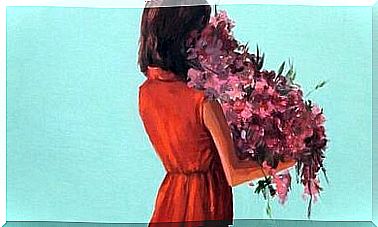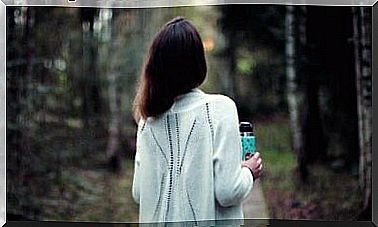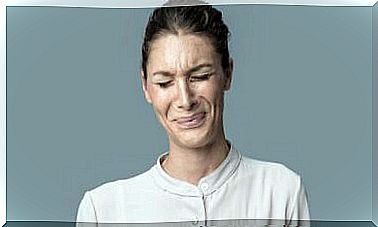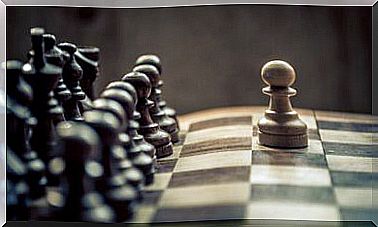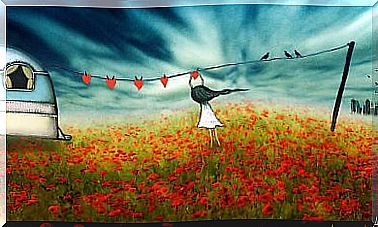Wassily Kandinsky, A Life Around Color
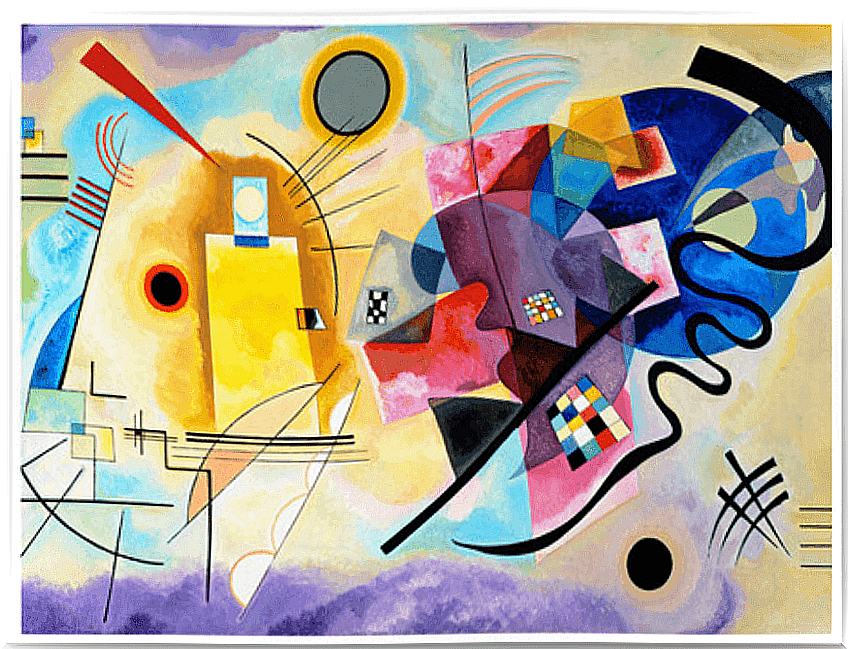
Wassily Kandinsky was the first painter to base painting on purely pictorial means of expression. Thus, Wassily abandoned the use of ‘objects’ in his paintings in anticipation of abstraction.
Kandisnky was a multifaceted artist, he was not only a painter but also an engraver and writer. On a world scale, this Russian artist is considered one of the creators of pure abstraction in modern painting.
After successful avant-garde exhibitions, he founded the influential Munich group Der Blaue Reiter (The Blue Rider, 1911–14) and began to paint completely abstractly. His forms evolved from his first fluid and organic works to geometric and, finally, pictographic works.
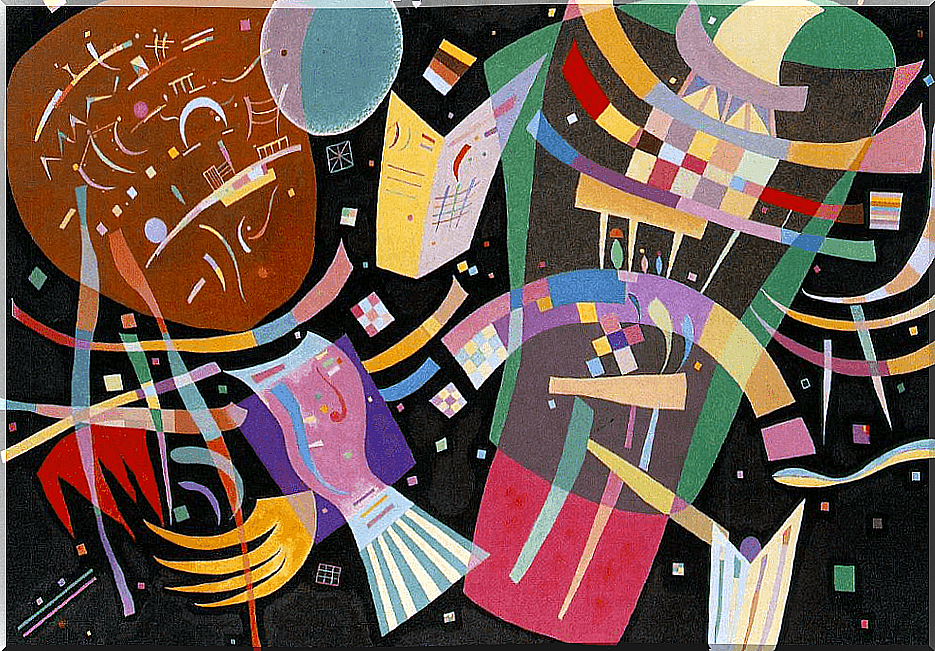
Kandisnky in Russia, his homeland
Wassily Kandinsky was born on December 4, 1866, in Moscow, Russia. He was born into a wealthy and multicultural home.
His mother was a Muscovite, one of his great-grandmothers was a Mongolian princess, and his father was a native of Kyakhta, a Siberian city near the Chinese border. Thus, the child grew up with a cultural heritage that was partly European and partly Asian.
His family was gentle and fond of travel. While still a child, he became acquainted with Venice, Rome, Florence, the Caucasus, and the Crimean Peninsula.
His mother had a strong musical inclination and his father worked as a tea merchant. When Kandinsky was just 5 years old, his parents divorced.
The boy moved to Odessa (Ukraine) to live with an aunt. There he learned to play the piano and the cello in elementary school, in addition, he studied drawing with a private tutor.
From his childhood, he had an intimate experience with art. His childhood works reveal quite specific color combinations, infused by his premise: “each color lives by its mysterious life.”
Kandinsky Youth
In 1886, he began studying law and economics at the University of Moscow. The young man continued to have unusual feelings about color as he gazed at the city’s vivid architecture and icon collections.
In 1889, the university sent him on an ethnographic mission to the Vologda province in the forested north. From this trip, Kandinsky returned with an interest in the often wild and unrealistic styles of Russian folk painting. This interest would not abandon the young man. That same year, he discovered the Rembrandts at the Hermitage in St. Petersburg, and continued his visual education with a trip to Paris.
By his own testimony, at this stage, he had lost much of his early enthusiasm for the social sciences. However, he continued his academic career and in 1893 he was awarded a doctorate degree.
At first, he resisted his artistic inclination, considering that art was “a luxury forbidden to a Russian. ” Finally, after a period of teaching at the university, he accepted a position as director of the photographic section of a Moscow printing company.
In 1892 Kandinsky married his cousin, Anna Chimyakina. Soon after, he accepted a position at the Moscow Law Faculty and kept his artistic taste as a secondary activity.
However, two events led to his abrupt career change in 1896. The first occurred while attending an exhibition of French Impressionists in Moscow the previous year, which was his first experience of unrepresentative art. The second was listening to Wagner’s Lohengrin at the Bolshoi Theater. Thus, Kandinsky’s life and career would take a new course from which there would be no turning back.
The beginning of Kandinsky’s artistic career
That 1896, as he approached his 30th birthday, Kandinsky decided to abandon his law career and move to Munich. The language was not a problem, as he had learned German from his maternal grandmother as a child.
In Munich, he decided to devote himself full time to the study of art. He enrolled at the Munich Academy of Arts, although much of his artistic learning was self-taught.
Kandinsky stated that Claude Monet’s work was one of his greatest influences. In Monet’s paintings, the subject played a secondary role in relation to color.
It was as if reality and the fairy tale were intermingled. That was the secret of Kandinsky’s early work, which was based on folk art and remained so even as his work became more complex.
Between 1902 and 1907, the artist remained on the go. He visited a list of countries that included France, the Netherlands, Tunisia, Italy and Russia, to settle permanently in Murnau.
During his travels, he painted a series of alpine landscapes between 1908 and 1910. His famous work The Blue Mountain belongs to this period , which explicitly described a scenic view of nature through colors.
Unlike other painters of the time, his use of color on canvas was extremely different. His color palette was used in order to express emotions rather than to provide a description of nature or the subject.
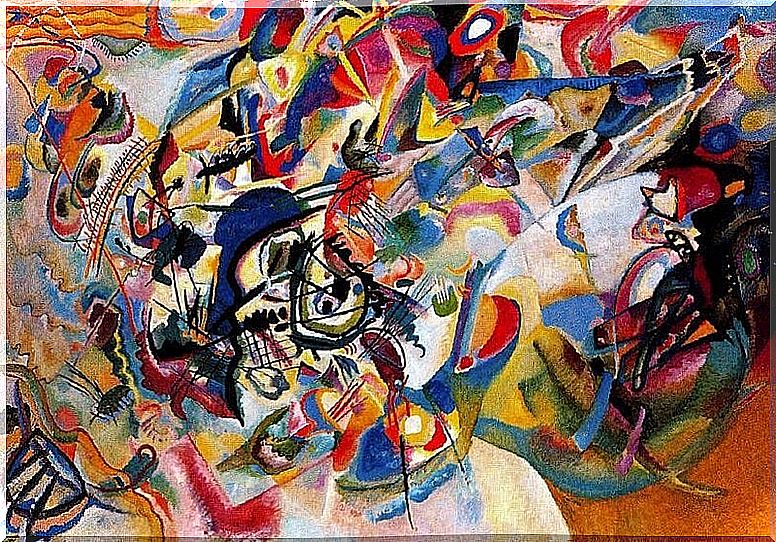
Munich and the Blue Rider group
In 1909, he founded the Munich Association of New Artists of which, in addition, he was president. However, his radical thoughts did not quite mesh well with those of some mainstream artists and led to the group’s disbandment in 1911.
The dissolution of the Munich Association of New Artists led to the formation of a new group, the Blue Rider; this time, with like-minded artists. The group organized two exhibitions and even published an annual calendar. However, with the outbreak of the First World War, Kandinsky returned to Russia.
The year 1910 was crucial for Kandinsky and for the art world. In that year, Wassily Kandinsky revolutionized the art scene with the production of his first abstract watercolor.
In this period, he published the treatise On the spiritual in art in the Blue Rider Calendar, in addition to promoting abstract art and the autonomous use of colors. Until this moment, color had been at the service of painting in a purely utilitarian way, that is, it served as a complement to represent an object, a landscape, etc. Kandinsky paved the way and disassociated this utilitarian use to give color total autonomy.
Kandinsky and his return to Russia
With the end of the Russian Revolution, the artist held an important position in the Commissariat (government office) of Popular Culture and in the Moscow Academy. Upon returning to Russia, he became engrossed in Russian cultural policy and assisted in art education and museum reform from 1918 to 1921.
He organized twenty-two museums and became the director of the Museum of Pictorial Culture. In 1920, he was appointed a professor at the University of Moscow.
Committing less to the canvas, he devoted much of his time to imparting artistic knowledge. For his classes, the artist followed a program based on the analysis of shapes and colors.
In 1921, Kandinsky founded the Academy of Arts and Sciences and became its vice president. At the end of that year, the Soviet attitude towards art changed. His ideas and his expressionist vision of art were rejected by the radical members of the Institute. Kandinsky was judged by his peers as ‘too distinctive’ and, as a consequence, he decided to leave Russia.
Reception in Germany, Weimar period
In 1921, the architect Walter Gropius, founder of the Weimar Bauhaus, invited Kandinsky to Germany and he accepted the invitation.
The following year, he was teaching painting classes for beginners and trained professionals. Kandinsky set about teaching them his theory of color with new elements from the psychology of form.
In 1926, he published his second theoretical book, Point and Line to the Plane , which described in detail his development of study forms. The work emphasized geometric shapes: triangle, circle, semicircle, straight line, curves and planes.
As he experimented with the use of color, his works would undergo further changes over time. Works from this period highlighted individual geometric elements that paved the way for cool colors.
In 1933, when the Bauhaus was closed by the Nazis, the painter settled in France.
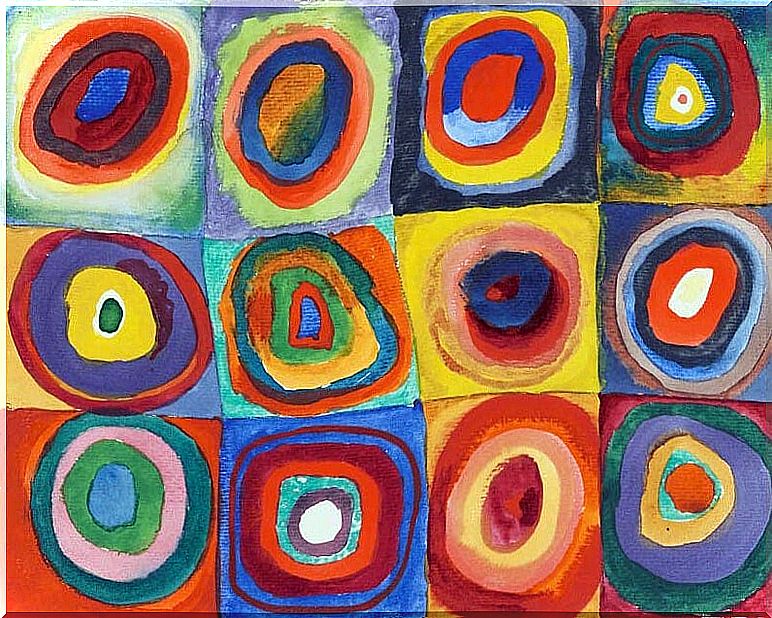
Stay in the city of light
In Paris, he stayed in a small apartment while he developed his creative activity. Most of his works from this era used original color compositions, occasionally mixing sand with paint to give a rustic granular texture.
The paintings of his Parisian period possess a splendid color, a rich invention and a charming humor.
In July 1937, accompanied by other contemporary artists, he presented his work at the Degenerate Art Exhibition in Munich. Although the exhibition was well attended, 57 of his works were confiscated by the Nazis.
The master of color and abstraction died of a cerebrovascular disease in Neuilly-sur-Seine, France, on December 13, 1944. But his memory lives on in his work and his paintings will always be immortal.
Kandinsky continues to be highly admired for his paintings and for being the creator of abstract art. He invented a language of abstract forms with which he replaced the forms of nature.
He wanted to reflect the universe in his own visionary world. I felt that painting had the same power as music; and that the line and the color should correspond to the vibrations of the human soul.


